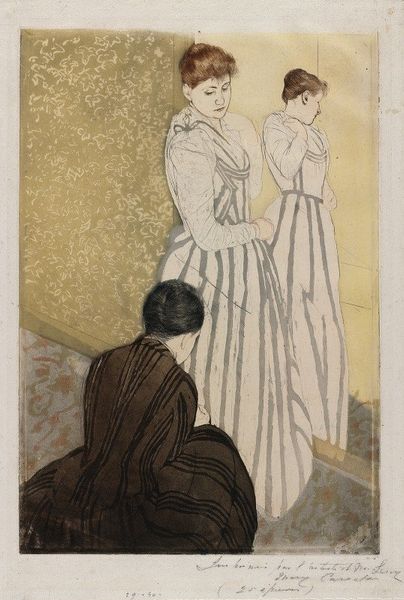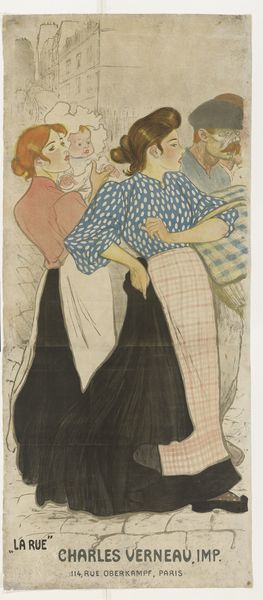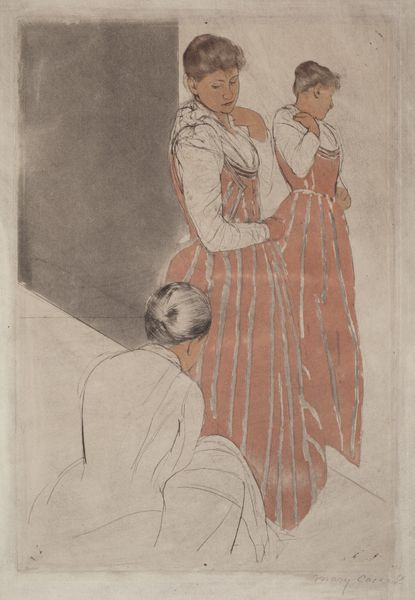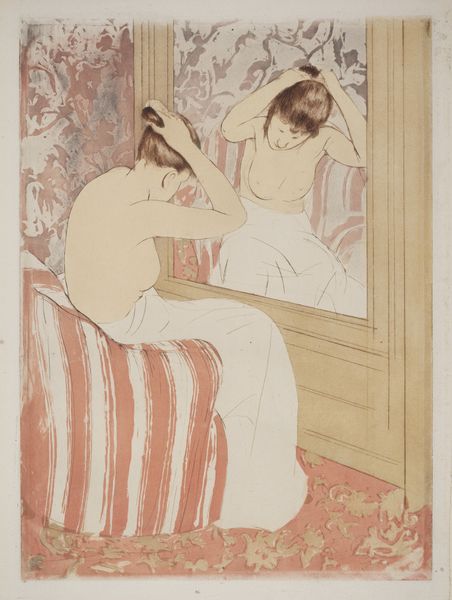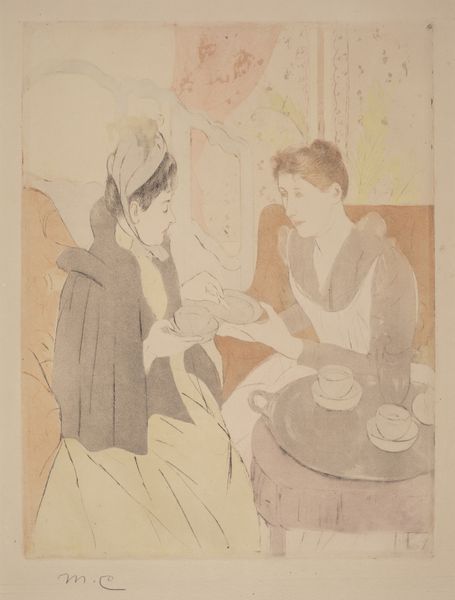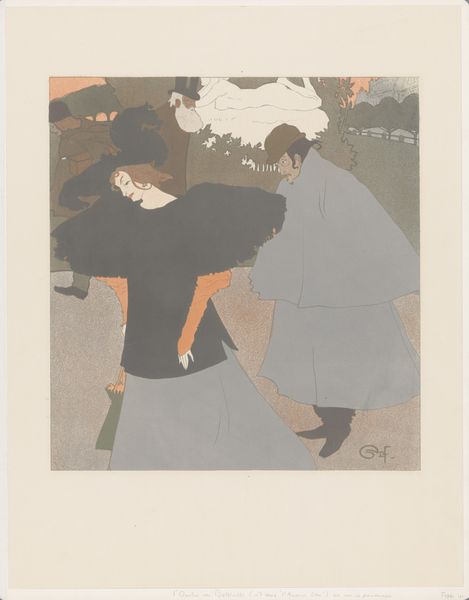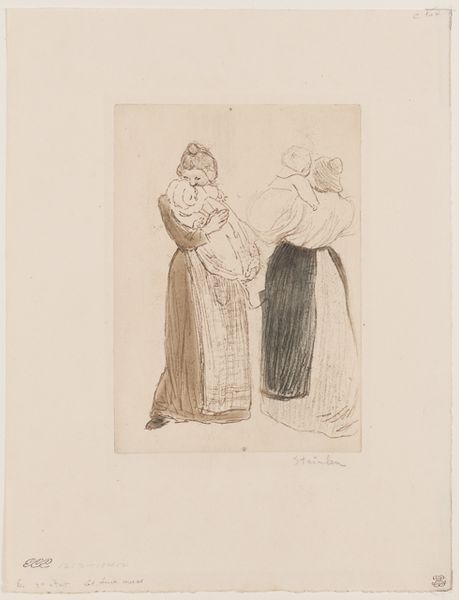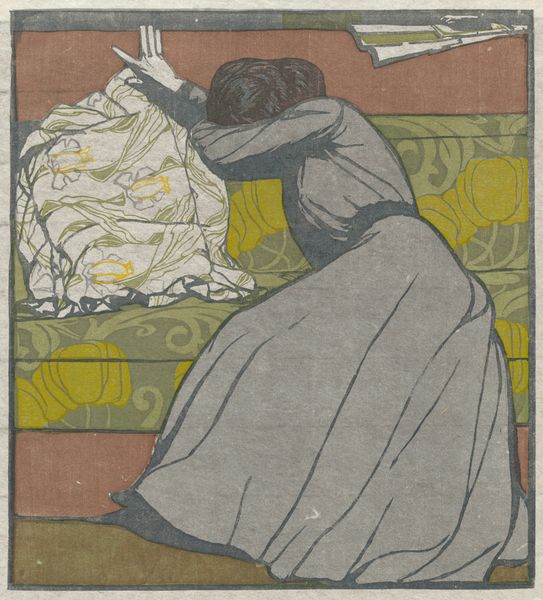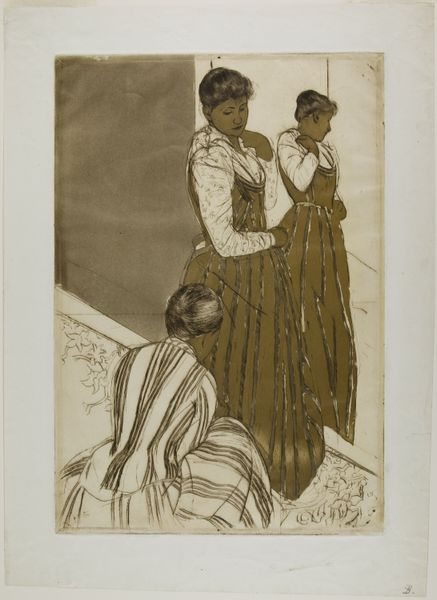
print, watercolor
#
portrait
#
water colours
# print
#
impressionism
#
figuration
#
watercolor
#
intimism
#
coloured pencil
Dimensions: plate: 37.6 x 25.7 cm (14 13/16 x 10 1/8 in.) sheet: 43.5 x 29.8 cm (17 1/8 x 11 3/4 in.)
Copyright: National Gallery of Art: CC0 1.0
Editor: This is "The Fitting" by Mary Cassatt, likely created between 1890 and 1891. It seems to be a print combining watercolor and colored pencil. The overall impression is quite intimate, like a private moment captured. What do you see in this piece? Curator: I see a powerful commentary on the constraints and expectations placed upon women in the late 19th century. The fitting of a dress, seemingly mundane, becomes a site where societal pressures are negotiated and performed. The corset, visible beneath the dress, literally embodies these constraints. Editor: That's interesting. I was focused on the surface, on the Impressionistic brushstrokes, and the quiet mood. Curator: Precisely! Cassatt uses that very style – associated with fleeting impressions – to subtly critique the limited roles available to women. Notice the gaze of the woman being fitted: it's not directed outward, towards the viewer, but inward, towards her own reflection. It speaks to the internalization of these expectations. Where does the other figure come in for you? Editor: She seems almost like a servant, perhaps the seamstress? It’s another layer of the dynamic. Curator: Exactly! This interplay raises important questions about class and labor as it relates to the female figure, not merely objectified, but agent. It is through that active positioning of women negotiating power relationships between one another that Cassatt shows an example of solidarity in a patriarchal context. Editor: I never thought about it like that, that's really fascinating. It changes my whole perspective on the work. Curator: Art serves as the point of conversation through time. It evolves just as social change dictates that it must, if it will endure the tides of opinion. I look forward to continuing to learn with you.
Comments
No comments
Be the first to comment and join the conversation on the ultimate creative platform.
